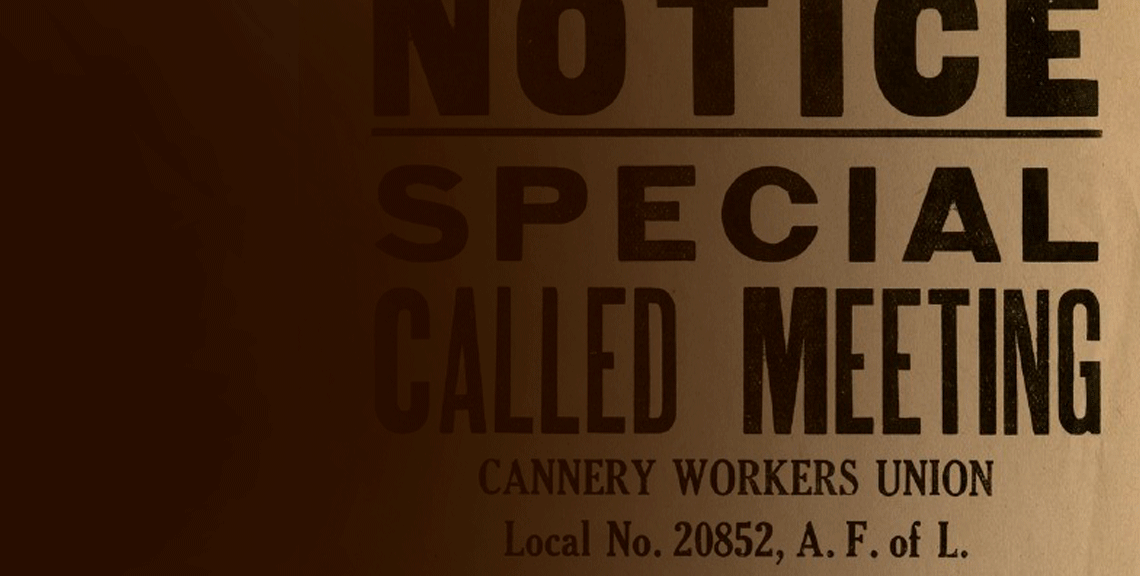
ETHNIC MEXICAN LABOR & CIVIL RIGHTS: SEARCHING FOR EQUALITY AND FORMING CIVIL SPACE, 1920-1960 OVERVIEW
The Mexican American civil rights movement began during and after World War I with the arrival of democracy-infused immigrants fleeing the Mexican Revolution. Facing employment discrimination and exclusion from skilled occupations, these refugees were forced into migrant agricultural work. Mexican workers viewed labor organizing campaigns as part of the path toward equality and civil rights. During the 1930s, Santa Clara County saw some of the most significant agricultural and cannery strikes in America, many involving Mexican workers. Because of successful cannery organizing begun in the 1930s, by the 1950s many Mexicans acquired a livable wage and benefits. However, agricultural unions were stymied by the Bracero Program, which undercut strikes, as noted by labor leader Ernesto Galarza. Labor unions and social justice organizations often overlapped in their assistance to ethnic Mexican residents.
Segregation and discrimination against ethnic Mexicans occurred in both the workplace and local communities. Efforts were made, unsuccessfully, to desegregate California schools during the 1930s, until a change in strategy emerged during the post-war period. As ethnic Mexicans settled in permanent colonias throughout Santa Clara County after WWII, they shaped a new identity, claiming cultural space and citizenship. Mexican communities included diverse groups– immigrants, naturalized Americans, and U.S.-born Mexican Americans–so a variety of community organizations arose to serve their needs, including mutualistas, town, social, and recreational clubs. Community organizations and cultural activities fostered social networks, established bonds of solidarity, and provided a strong foundation for a Mexican civil rights movement to emerge within a flourishing community of musicians, artists, writers, and social activists.
The Second World War, in which Anglo Americans and ethnic Mexicans served in integrated units, brought a major change to the ethnic Mexican community as, after the war, coalitions were formed to address racial discrimination. Mexican American veterans formed the American G.I. Forum and joined the Community Service Organization (CSO), begun in Los Angeles in 1947 as a regional voice for disenfranchised communities, fighting for political reforms regarding citizenship, voting rights, economic equity, and desegregation. Both César Chávez in San José and Dolores Huerta in Stockton learned organizational and leadership lessons in their local CSO chapters.
From 1920 to 1960 Santa Clara Valley was transformed from being the nation’s largest fruit producer to becoming the center of the high-tech world. In the 1960s and 70s, large sections of the old Mexican colonias in Mountain View and downtown San José would be demolished through urban renewal, street development, and freeway construction, displacing families and businesses. Union contracts had provided cannery workers with a level of economic security, but as canneries closed, workers lost their middle-class incomes and benefits. While earlier civil rights advocates, like LULAC and the CSO, focused on political reform and legal challenges to discrimination, a new generation of community activists would emerge to embrace a more confrontational approach and create new alliances. The early ethnic Mexican labor and civil rights struggles in Santa Clara County between 1920 and 1960 fostered the development of the Chicano Movement of the 1960s and 70s.
Collection: History San Jose Online Catalog Owning Institution: History San Jose Research Library
Source: Source: Calisphere